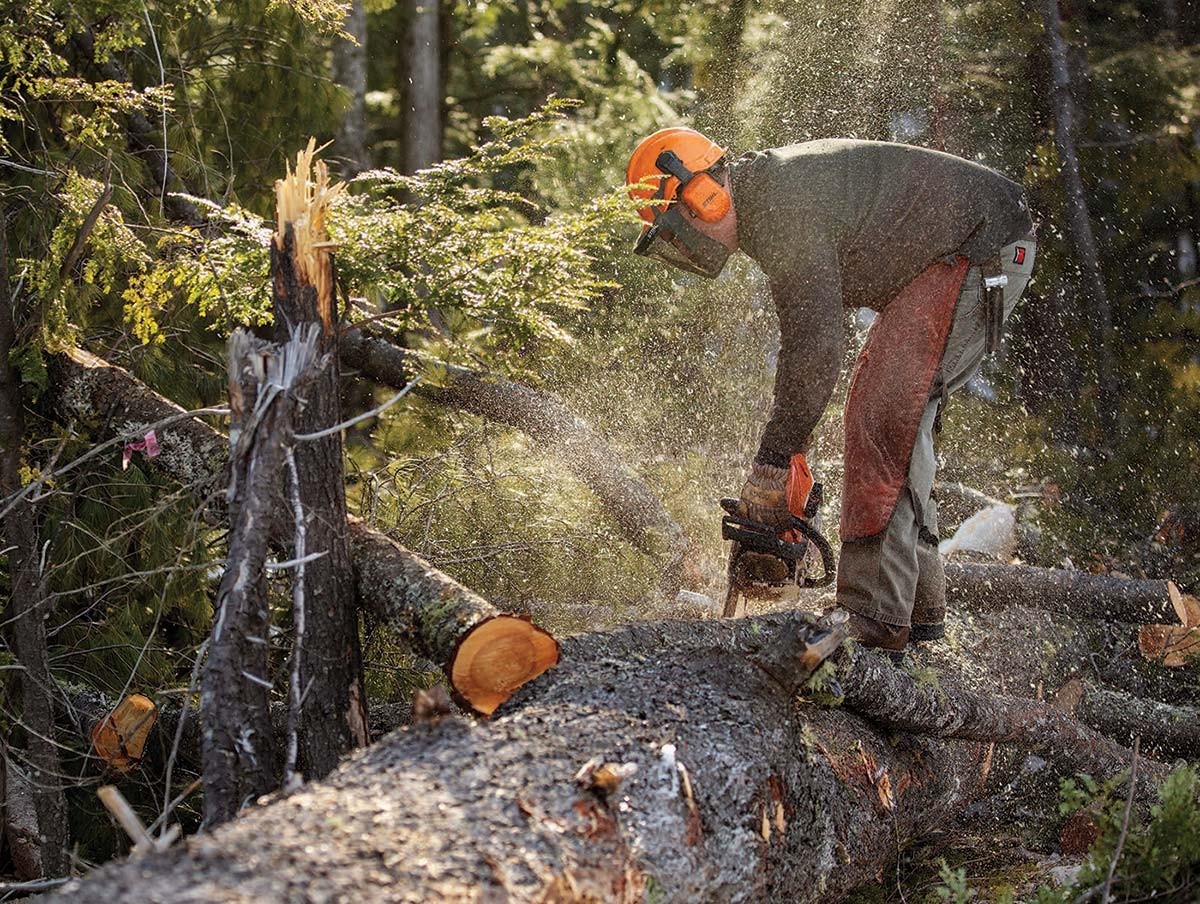
An Interview with Lee Russell
At a timber harvest site managed by Katahdin Forest Management along the Golden Road in Millinocket, Maine, photographer Ashley L. Conti caught up with logger and independent contractor Lee Russell. The 50-acre tract is being managed as shelterwood, and Russell focused on harvesting white pine to allow more light to reach the floor and to promote regeneration of spruce and pine. Northern Woodlands interviewed Russell to get his perspective as a self-employed logger.
I’ve been a certified logger since 1995, started logging right out of high school for a gentleman in Lincoln, Maine, for a couple of years, then went out West, logging in Idaho and western Massachusetts for brief periods, then I came back to Maine. I’ve been self-employed since 1997. I started with small contracts cutting by myself. I took on a contract with Katahdin Forest Management in 2003 and I’ve been with them since, with occasional contracts with Prentiss & Carlisle. I bought mechanical equipment – a feller buncher, grapple skidder, and delimber – and had subcontractors for a while, then got rid of that equipment and went back on my own. I just use a cable skidder now. That’s what I enjoy the most, working on my own.
A lot of areas that I cut are under special zoning along rivers and lakes, such as 40 percent removal, looking for certain tree species, taking care not to open up the stand too much. I look at wildlife habitat, different tree types, look for nests and holes in the trees, and that dictates what to leave for wildlife. Along streams, I need to leave shade to keep the water cool for any spawning trout. At all the blocks the forester gives me a prescription, and then I rely on my own knowledge about how to harvest based on those parameters.
For young loggers coming into the field, it’s all about consistency. There’s ups and downs and you gotta be consistent and persistent. It’s a big school – takes a lot of years to learn all the knowledge needed to become successful at it. When I started, there were so many younger people logging, but we’re not seeing that in Maine anymore.
The industry could use some young blood. A driving factor for me to downsize was that I couldn’t find truck drivers or machine operators. A lot of the big operators are hurting because there’s no workforce.
Loggers are a different breed. I’ve been up since 1 a.m., load up the truck, cut all day, six to seven days a week. You have to have a good attitude, because that’s what it takes. Even though I’m working six to seven days a week, I’m outdoors; I have freedom. When I had mechanical equipment and subcontractors I had to be there every day to make sure the work was getting done. Now I have the freedom to take the day off and spend time with my family.
Smaller tracts offer a positive trend. You don’t need much volume to balance the cost of a cable skidder. A good used skidder costs about $30,000. You can make $3,000 to $6,000 a week with a cable skidder. The cost per ton to run big mechanical operators is a lot – you need good volume, can’t be moving block to block to block. A mechanical operation costs more than $1 million, and it takes too much volume to sustain that overhead.
Eighteen to 23-year-olds can’t just go and buy a cable skidder and go to work. There’s a learning curve, and training needed to reduce the potential for injury. I would love to be an instructor in a training program. I really enjoy what I do, and I know I’m good at it, and I’d love to teach someday.
I average about 80 cords a week, and I have way less overhead, and I do the work by myself. A lot of guys are figuring that out. With more private land in southern Maine, I see opportunity here for up-and-coming young loggers. I think to get their foot in the door they need to start with a big company. Big landowners want super contractors, big crews, several crews – they take up all the work. You have to find a niche to step in.
I cut anything no one else wants to cut. A job I did this [past] summer, they had several contractors refuse to do it. I cut the first part of it; it was a very rocky, long yard. You need to be willing to take the next steps. I’ve cut a lot of hard ground and I’ve got the knowledge to do it, while others are skeptical because they don’t have that experience.


